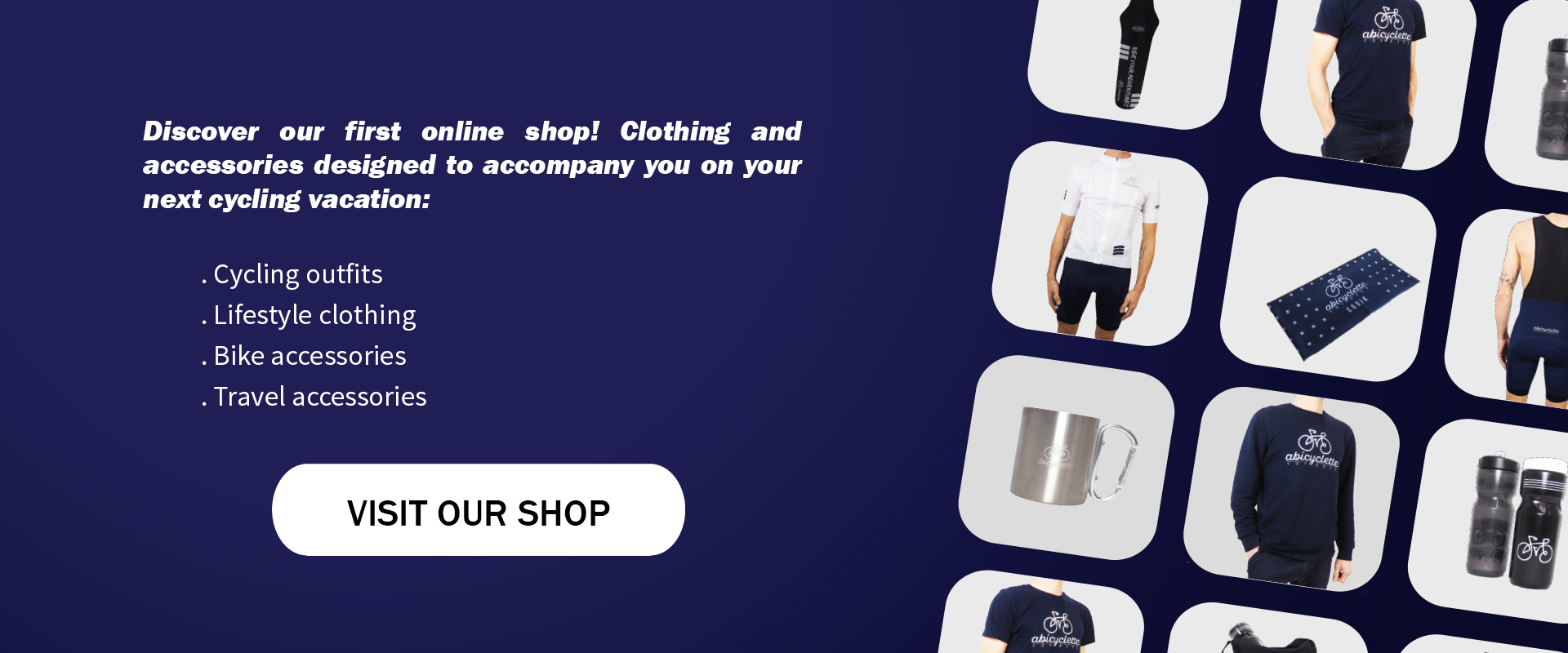What should I pack in my bike panniers?
10 August 2024
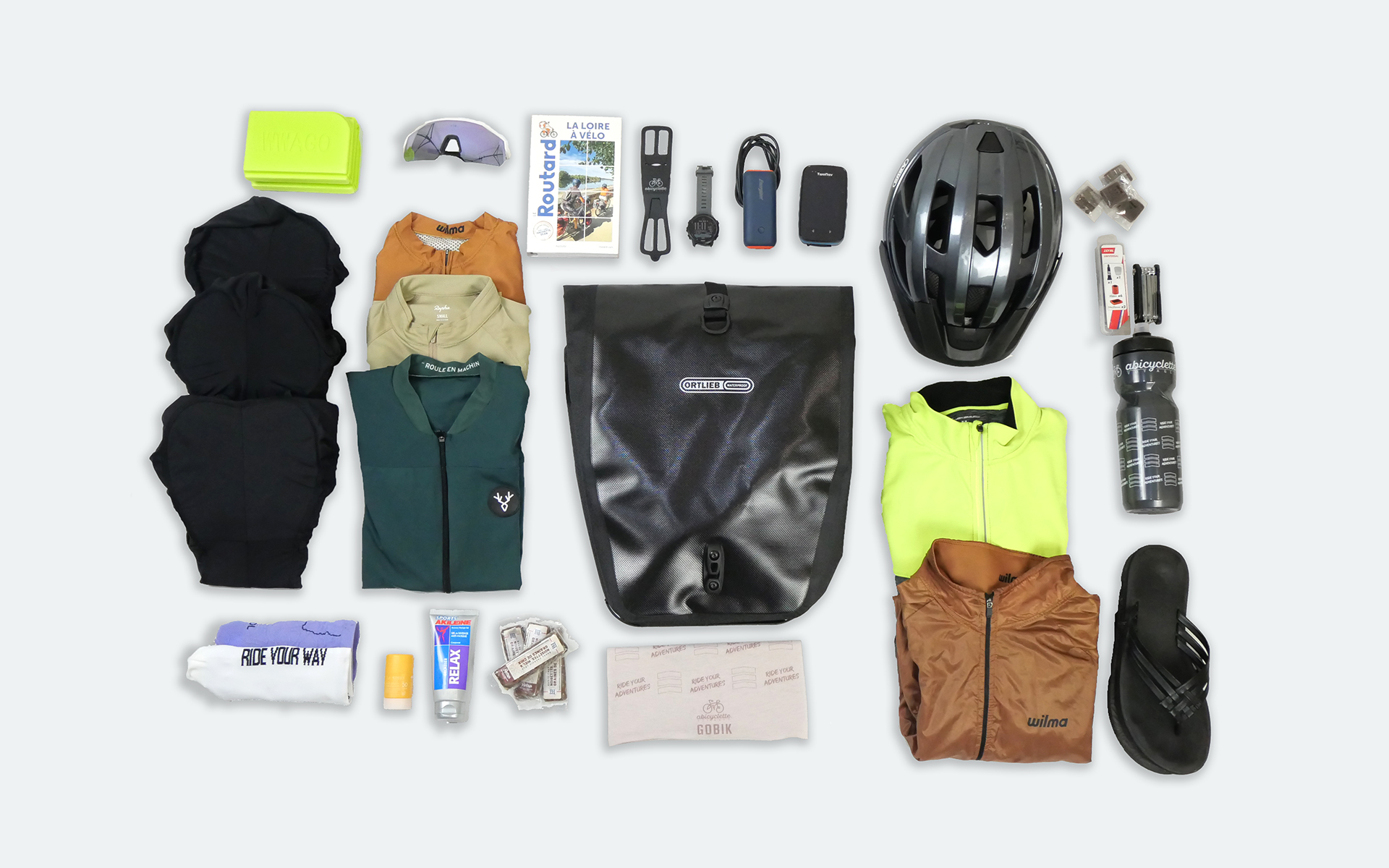
Travelling by bike offers incomparable freedom. If you want to escape from the comfort of everyday life, it’s important to know how to separate the essentials from the superfluous, so you can travel light without lacking anything. For a day or a week on the road, every item must be selected to optimize your comfort and energy. If you’re wondering how to organize your bike panniers, we’ll guide you here through the essentials you need to pack for different lengths of trip and practice, to ensure a successful experience.
Autonomous bike touring for a week
Touring by bike is a great adventure for those who appreciate autonomy. If for you, bicycle travel is synonymous with simplicity, and you’d like to carry your luggage yourself, it’s essential to organize your equipment to ensure comfort and efficiency, while keeping your panniers light and tidy. The recommended total load capacity on the bike is 60 to 80 liters (2 to 3 panniers on the rack, 1 pannier on the handlebars, 1 to 2 panniers on the fork). Here’s a list of clothes and accessories you’ll need to take with you, plus a few tips for organizing your storage space.
Clothing:
- 2 cycling jerseys: breathable and quick-drying.
- 1 or 2 technical T-shirts: for breaks or more relaxed days.
- 1 light fleece or sweater: for early starts and cool evenings.
- 1 waterproof and windproof jacket: essential for protection against rain and wind.
- 2 cycling shorts: with or without padding, depending on your preference.
- 1 pair of light, comfortable pants: when not on the bike.
- 1 pair of leggings or rain pants: For riding in bad weather.
- 3 to 4 pairs of underwear and sports socks: avoid cotton for better drying.
- 1 pair of cycling gloves: for comfort and protection.
- 1 multifunctional neck warmer or bandana: for chilly mornings or to protect your ears.
- 1 cap: for protection from the sun.
- 1 pair of cycling shoes and 1 pair of light shoes or sandals for relaxing or sightseeing.
Toiletries and personal care essentials:
- Compact toiletry kit: toothpaste, toothbrush, multi-purpose soap, solid shampoo, sun cream, etc.
- First-aid kit: bandages, disinfectant, personal medicines, etc.
Bicycle equipment:
- Repair kit: spare inner tube, tire lever, pump, multi-tool.
- A lock: lightweight but effective for securing your bike.
- Front and rear lights: essential for safety, especially if you’re riding at the end of the day.
- Bottle holder and water bottles: to keep you hydrated throughout the day.
Extras:
- Phone charger and external battery: essential for keeping your devices charged.
- Map or GPS: in case of battery or network problems.
For an optimized trip, it’s essential to keep your panniers organized. By keeping your panniers tidy and optimizing weight, you can ensure a pleasant, stress-free cycling trip.
- The front pannier, attached to the handlebars: store items you want to keep accessible during the day, such as snacks, sun cream, glasses or first-aid kit.
- Rear panniers: dedicated to clothing. Roll up each item of clothing to save space, and distribute the weight evenly to keep you balanced on your bike.
- Central pannier, if you have one: for technical and repair equipment, as well as your bike lock.
- Additional bags: use small bags to separate personal items (such as papers and money) and to group electronic cables and chargers.
- La sacoche avant, accrochée au guidon : rangez les articles que vous souhaitez garder accessibles pendant la journée, comme les snacks, la crème solaire, les lunettes ou la trousse de secours.
- Les sacoches arrières : consacrées aux vêtements. Enroulez chaque vêtement pour économiser de la place et répartissez le poids correctement pour bien rester équilibré sur votre vélo.
- Sacoche centrale, si vous en avez une : pour le matériel technique et de réparation du vélo, ainsi que l’antivol.
- Pochettes supplémentaires : utilisez de petites pochettes pour séparer les objets personnels (comme les papiers et l’argent) et pour regrouper les câbles et chargeurs électroniques.
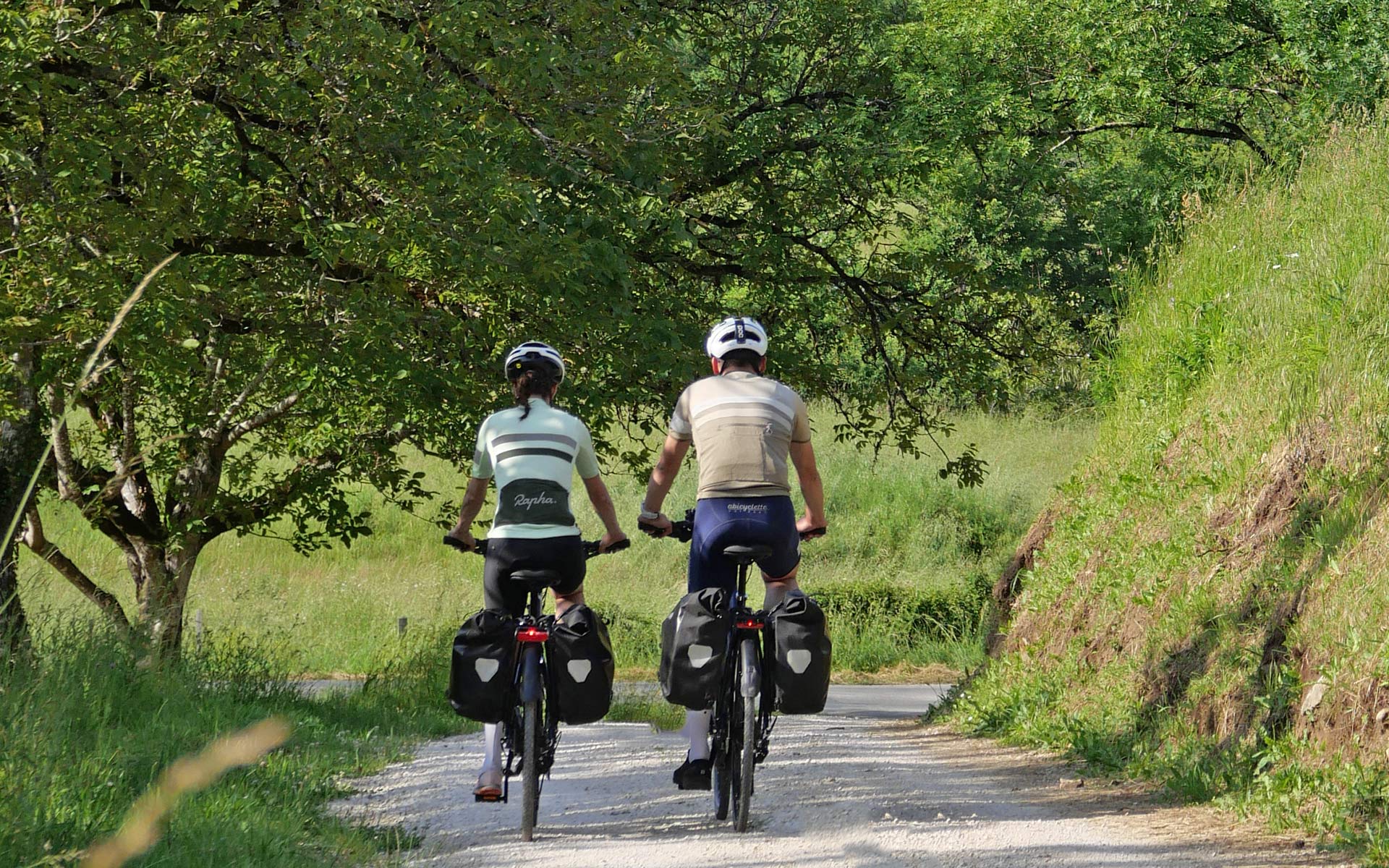
Planning a bikepacking trip
Bikepacking is a minimalist and liberating way to travel by bike. It allows you to cover long distances while remaining light and agile. Unlike traditional cycle touring, bikepacking uses panniers specially designed to fit the bike frame, optimizing aerodynamics and handling. With recommended load capacities of 25 to 40 liters, it’s important to choose and organize your equipment carefully.
For efficient travel, three types of bags are generally used:
- A saddlebag: capacity 8 to 17 liters. Ideal for clothes and other bulky but lightweight items.
- Handlebar bag: capacity from 4 to 10 liters. Suitable for light, easily accessible equipment, such as a waterproof jacket or energy bars.
- Frame bag: capacity 4 to 8 liters. Perfect for heavy, dense items such as tools and electronics.
These bags are designed to minimize bulk and ensure good handling of the bike, whether it’s a mountain bike, road bike or gravel. Here are a few brands of bikepacking bags we recommend:
- In France, several craftsmen make high-quality panniers: Le Rouquin qui Roule, based in Rostrenen, Brittany; Akao Designs, located in Saint-Malo, Brittany; and Vélocidade, based in Ariège.
- Two well-known international brands are also a must: Restrap, made in the UK, renowned for its durability; Apidura, made in China, famous for its lightness and innovation.
Organizing your belongings
The distribution of your belongings will depend on how easy it is to open your bags and how accessible they are. The most accessible bags, with the easiest opening, will hold the things you need during the day:
- Documents: bank card, cash, ID card, passport.
- Food: energy bars, Swiss Army knife, stainless steel fork.
- Personal care: sun cream, small first-aid kit.
- Clothing: raincoat, down jacket, gloves.
- Mechanical equipment: patch kit, tire lever, multi-tool, hand pump.
- Electronics: portable charger, GPS.
The less accessible bags are dedicated to evening essentials such as personal care products (toothpaste, toothbrushes, personal toiletries, chamois cream…) and clothing.
To optimize space in your bikepacking bags, start by rolling and compressing your clothes. This technique reduces the space occupied by your belongings, maximizing the capacity of your bags. Next, use compression bags for your clothing and sleeping gear. These bags compress items to the maximum, freeing up space for other equipment. For better balance, it’s advisable to store heavy, compact items near the center of the bike, which helps distribute weight optimally and improves handling. Last but not least, multi-functional items save space. For example, a multi-tool can replace several individual tools, allowing you to travel lighter.
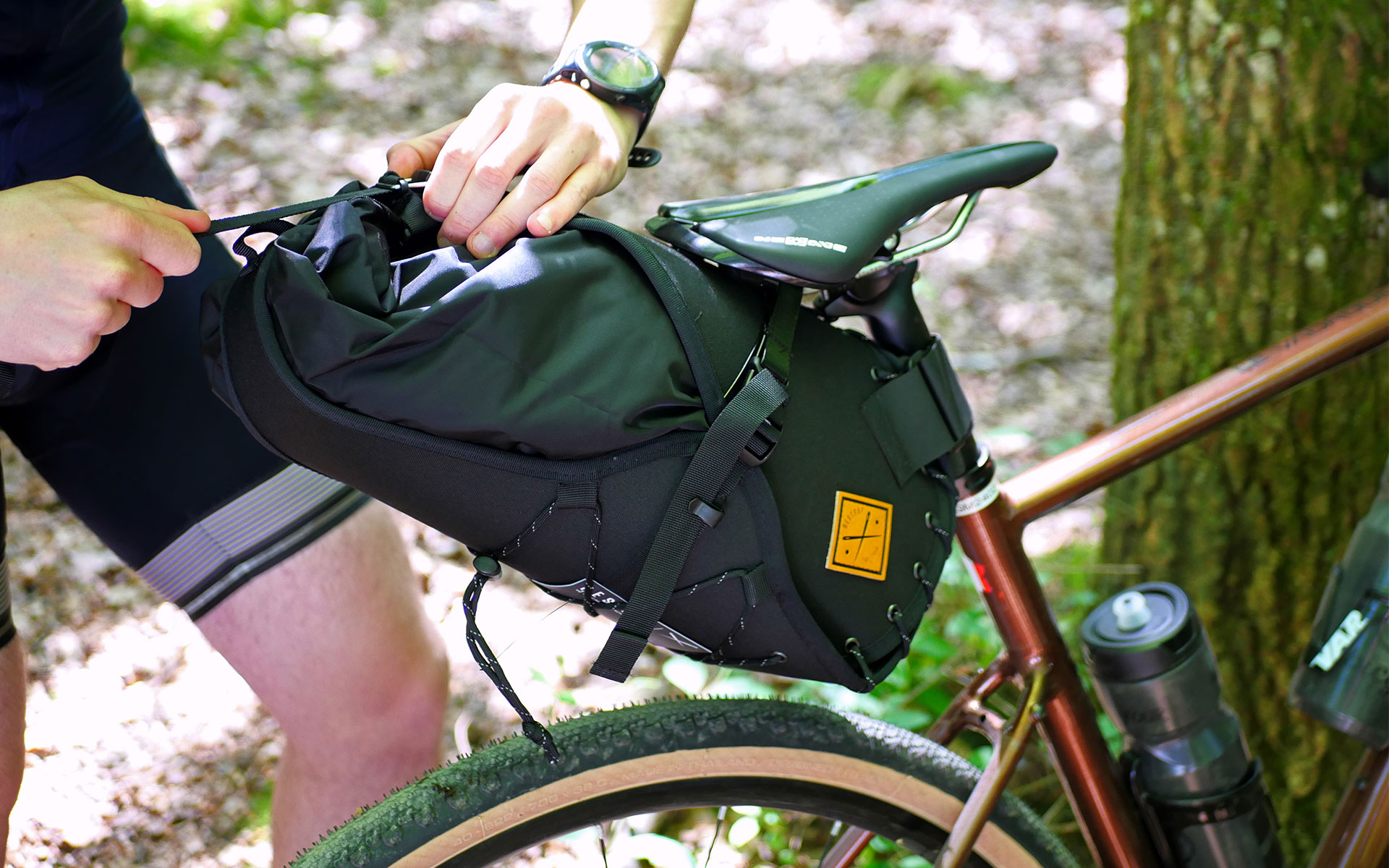
Travel light with our luggage transport service
With Abicyclette Voyages, make the most of your cycling adventures with our luggage transport service, which allows you to travel lighter and with complete freedom. By leaving your bulky luggage behind, you can concentrate on the essentials. And to make your experience as enjoyable as possible, it’s important to take along a few essentials to make the most of your day on the bike. The recommended total load capacity on the bike is 25 to 30 liters (1 rear pannier, 1 handlebar bag).
Discover our expert advice on how to prepare your panniers efficiently and ride with peace of mind:
- Protective eyewear: essential for protecting your eyes from the sun, insects, dust and rain. Choose models with interchangeable lenses to adapt to changing weather conditions.
- Sunscreen: to protect your skin from UV rays, opt for compact tubes that are easy to slip into a pocket, and remember to reapply regularly, especially if you’re sweating.
- A waterproof and windproof jacket: choose a lightweight, breathable jacket to protect you from rain and wind. A compressible model is ideal for saving space in your panniers.
- Energy snacks: pack granola bars, dried fruit or your favorite cookies for a snack. These snacks will give you the energy you need to keep pedaling.
- Hydration: make sure you have enough water for the day. A water bottle on your bike or a water bag in your backpack are practical solutions. And don’t forget electrolytes to keep your energy levels up.
- A phone holder and an external battery: a phone holder fixed to the handlebars makes it easy to keep track of your route. Don’t forget an external battery to recharge your devices along the way.
- An insulated mat and picnic accessories: for your lunch breaks, an insulated mat is ideal for sitting comfortably. Take along a small board, folding knife and corkscrew for a convivial picnic.
- A small book or guidebook with local anecdotes and stories will enrich your trip and help you get to know your destination better.
- A repair kit: make sure you have a repair kit supplied with your Abicyclette Voyages bike rental, with a set of tire levers, a compact pump, patches and multi-tools. This will enable you to deal with minor breakdowns stress-free.
- Light, versatile clothing: choose clothes that dry quickly and that you can layer to adapt to changing temperatures. This will enable you to travel light while remaining comfortable.
- Waterproof protection for your valuables: use a zipped plastic bag to protect your wallet and payment cards from moisture. If your panniers are not waterproof, this can be very useful.
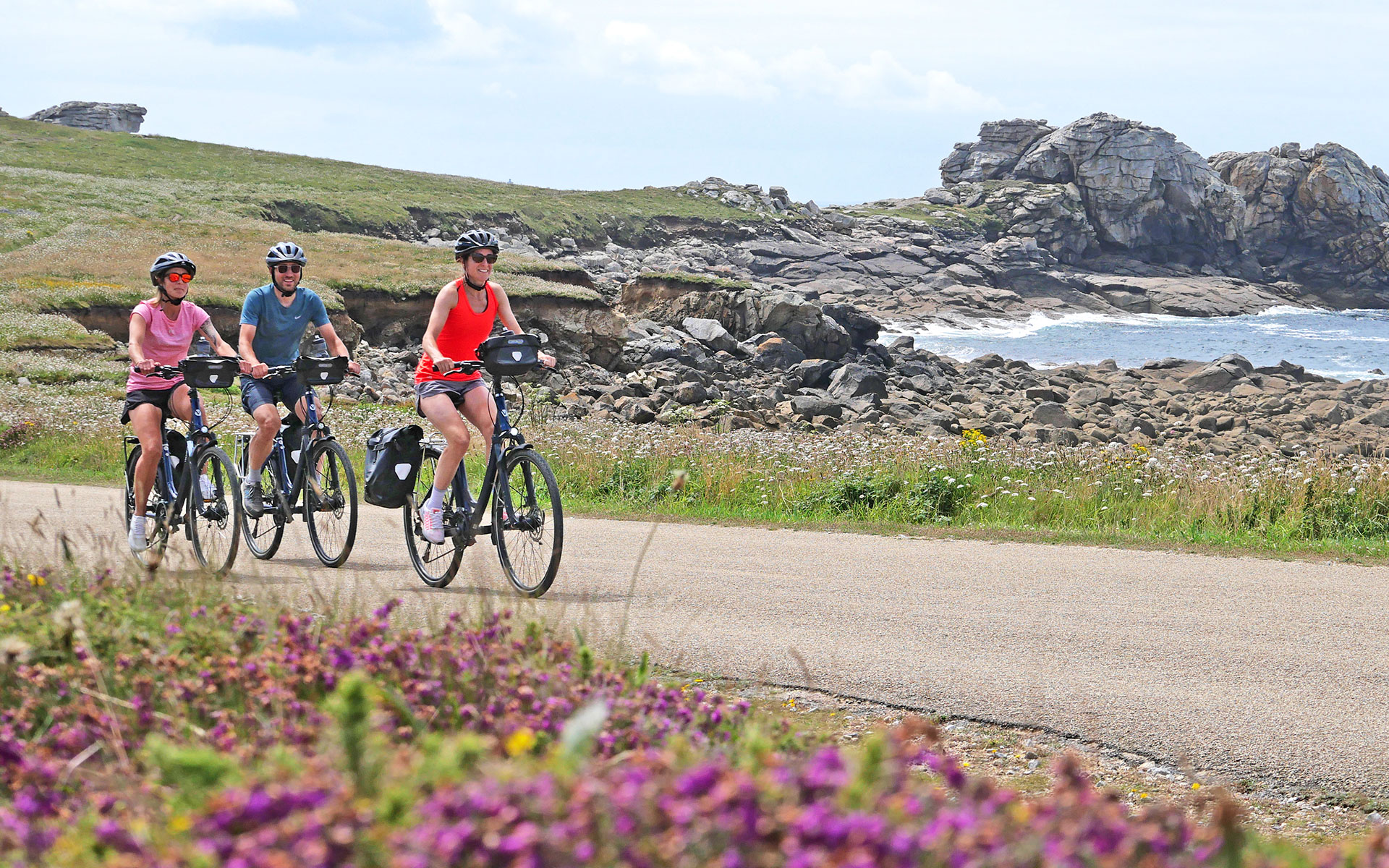

Julien’s tips for ultra-cycling gear
Ultra-cycling is the competitive form of bikepacking. Races of 300 to 4000 km to be covered autonomously with no defined stages (the stopwatch never stops and each competitor is free to set his or her own breaks), races to be run both day and night over 2 to 10 days.
Julien, Cycle Mechanic at Abicyclette Voyages and one of the team’s enthusiasts for these long-term challenges, knows that the success of this type of adventure also depends on the equipment. Sufficiently light to be efficient and effective, sufficiently equipped to deal with the most common eventualities and ensure crossing the finish line. To optimize every stage of this demanding event, he shares with you his advice on how to fill your bags before setting off.
Recommended total capacity on the bike: 15 to 30 liters.
“To prepare for an ultra-distance bike race, it’s essential to organize your bags properly. Start with a complete repair kit, including:
- A pump
- Patch kit and glue
- Chain quick link
- Multitool (with chain tool)
- Set of tire levers (2-3)
- Two spare inner tubes
- A pair of spare brake pads
- Mini can of chain lubricant
- 2-3 plastic clamps
- Pack of tissues
- Electrician’s tape
- A piece of sanding paper
- Small rag
- 2-3 rubber bands
- Swiss Army knife
- Wire
Clothing
Make sure you have the right clothing for the weather: a waterproof jacket, mittens, warm cuffs, leggings and overshoes for the rain, as well as photochromic sunglasses to protect you from the sun during the day, and to be able to ride with at night. You’ll also need a reflective vest, sleeveless jacket or harness to be clearly visible.
Electronics
Ensure safety with two rear lights, a front light on the bike, and a headlamp on the helmet. A GPS to follow the route and ensure geolocation at all times. A mobile phone to contact emergency services in the event of a problem, and to take photos to bring back some great snapshots (you’ll be riding through some incredible places and/or meeting some memorable people!) Don’t forget to bring a power bank to recharge all those electronic devices.
Nutrition
Don’t forget to pack nutrition bars, both sweet and savory, for energy and variety. Include bags of dried fruit and oilseeds such as cashews, dried apricots and almonds. It’s important to take the foods you crave to avoid flavor boredom. Carry two one-liter water bottles, with isotonic drinks or electrolyte tablets.
Understand the importance of food preparation for an ultra-distance race. A nutritious breakfast before a long effort is essential: opt, for example, for oats, fresh fruit, plain yogurt, a little agave syrup for taste, pieces of dark chocolate for a sweet kick, and scrambled eggs for protein. All this will provide you with a solid base to start your day.
During the race, listen to your body and make sure you eat and drink every 20-30 minutes. This routine will help you maintain your energy levels and avoid dips in performance (even at a slow pace). It’s often in moments of fatigue that good eating habits make all the difference. By taking care of these details, you give yourself every chance of succeeding and savoring every moment of this incredible adventure!”
Adapt your bags and their capacity to your adventure
Preparing your bags for a bike trip requires a certain amount of expertise, but by following these tips, you’ll be perfectly equipped to ride with ease. By traveling light and concentrating on the essentials, you’ll maximize your comfort and enjoyment throughout your adventure. To complete your preparations, take a look at our article “Travelling light by bike”. There you’ll discover tips for lightening your load even further, while optimizing the organization of your belongings, so that every journey becomes a true source of pleasure and discovery. Enjoy your trip!
